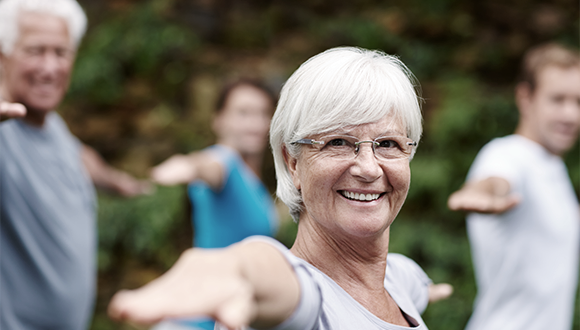Is yoga is good for you?
More people every year are turning to yoga, but are there proven health benefits?
Hannah Hempenstall
July 2017
Yoga has recently been revealed by Roy Morgan Research to be the fastest-growing fitness activity in Australia, with around 2 million Australians regularly practicing yoga – double the number of people in 2008. What is it about yoga that’s so appealing?

The benefits of yoga
It’s often said that yoga practice brings you into the present moment, which decreases stress and brings a sense of peace and harmony. Some people report that on a physical level it can be relaxing or strengthening, depending how you practice.
Dr John Denninger of Harvard University has spent years investigating how yoga impacts genes and brain activity in people affected by chronic stress, and his work indicates that yoga and other meditative practices might actually impact stress and immunity.
Dr Denninger believes there is a true biological effect, telling Bloomberg: “The kinds of things that happen when you meditate do have effects throughout the body, not just in the brain.” However, it’s unclear whether such effects are specific to yoga or simply due to the physical activity.
The benefits of yoga may include improved flexibility, strength, circulation and increased feelings of calm and wellbeing. It may also lead to a stronger, more toned physique with the added benefit of reduced stress and an inner awareness that leaves many of us feeling simply ‘better’.
The different types of yoga
There are several common types of yoga classes but one thing they all share is a set of postures, or ‘asana’, although each class will approach them differently. Certain types of yoga may suit people of different ages differently. Common types of yoga include:
- Restorative: A gentle style involving lying down and stretching
- Yin: Focusing on joints and stretching, seated stretches can be held for minutes at a time
Vinyasa: An energetic style, using different poses and breathing - Bikram: A more challenging type of yoga practiced in a heated room. It’s important to keep hydrated in this class as the heat makes you sweat more.
If you have a pre-existing health condition, speak to your doctor before trying yoga. You should never push yourself into a pose that’s uncomfortable as it could injure your body. Muscular injuries of the lower limbs are most common, especially the hamstrings and knees. Rarely, more serious problems can occur, for example, Bikram (hot) yoga has been associated with heart attacks and seizures.
Getting started
Yoga isn’t about striving for perfection or competing with those in your class. David Surrenda, the founding dean of the Graduate School of Holistic Studies at John F. Kennedy University in California, says the aim of yoga is “increasing awareness” of the body and mind.
Bianca Machliss, physiotherapist and co-director of a Sydney yoga school, warns that for beginners who are stiff in the shoulders or haven’t yet built up strength, yoga can initially feel challenging or confronting.
She says to look for easier modified poses to protect your spine and joints, but stick with it and you’ll benefit quickly. Once you’ve mastered the basics of the postures, focussing on your breath will help you go to the next level.
“People often struggle with bringing their focus to their breath as we’re so used to having the mind and the body separate,” says Stewart. Her advice? “When it comes to breathing in a yoga class, the best way is simply to allow the body to breathe normally and naturally.”
To find out more about yoga, ask about classes at your local gym or find a registered teacher at Yoga Australia.
Related articles
What kind of exerciser are you?
From people player to weekend warrior, find the key to enjoying your workouts and sticking at them.
Exercise for healthy bones
Bone health is a key factor in ageing well and exercise can help you build stronger, denser bones.
The importance of fitness in your 40s
If you’re in (or edging close to) your 40s take note; building exercise into your life can boost your health, now and in the future.
Beating lower back pain
Your lower back does all the heavy lifting for your body so it’s important to look after your lumbar spine.